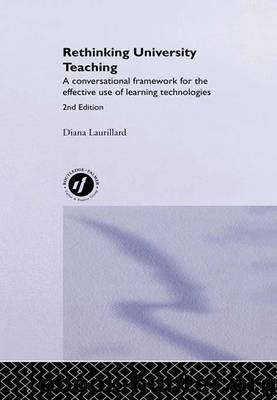Rethinking University Teaching by Laurillard Diana;

Author:Laurillard, Diana;
Language: eng
Format: epub
ISBN: 1273111
Publisher: Taylor & Francis Group
On the other hand, students in the task-action mapping group justify their decisions using instrumental reasoning referring only to quantities and processes explicitly represented on the screen, so that the actions remain uninterpreted:
Power is going down, we need to increase the steam valve.
We are getting nothing like the power we need. Open steam valve up, about, put it up to fifty.
(Ibid. 29)
For this latter group, the content was irrelevant; only the quantities were figurai. The structural description given to the other group, with the focus on the behaviour of the system rather than quantitative control, elicited more real-world, qualitative reasoning. Purely quantitative reasoning is not inevitable in simulations, therefore, but we may need to encourage a more interpretive approach, as it is not elicited when students simply operate the simulation. I reported a similar finding from an evaluation study in engineering, where students spent much of their time ‘number-hunting’, trying to find the exact value of a parameter that produced the critical effect (Laurillard, 1987b). The dialogue was of the pure ‘up-a-bit, down-a-bit’ form that Moyse reported for his task–action mapping group.
The internal relations between the parameters in many simulations are too complex for the underlying model to be determined with any accuracy from these kinds of numerical experiments. Instead, lecturers using simulations must provide detailed notes that set out the derivation of the model. Students may then refer to the symbolic description to help them make their decisions, especially if it is available on screen (Edwards, 1996). Checking the formal representation enables the student to tell, for example, that one parameter is affected by an exponential, and needs to be increased a great deal before it has a noticeable effect on another. This is a valuable educational tool for encouraging something like Resnick’s ‘mapping strategy’ (Resnick and Omanson, 1987), because it enables students to relate the mathematical symbolism to the behaviour of the system. If this works, then they begin to achieve better coverage of the learning process, as they are now focusing on formal descriptions of the simulated world, as well as actions within it.
This kind of access to the teacher’s conception within a simulation is a matter of design decision. Simulations are based on a model, and in most the model remains hidden in the depths of the program, inaccessible to inspection by the student. It is common for a teaching program to be issued with accompanying notes that state the model, and even, if the students are supposed to have some mathematical competence, its derivation. The model is the topic structure, so it exists in an explicit form in the program code and on paper somewhere. The complexity of the explicit form is usually the main reason for creating a simulation, so that students can become familiar with it by investigating the behaviour it models rather than by inspecting its explicit form. But having both forms of access – explicitly via the equations or rules, and implicitly via the behaviour of the model – gives the
Download
This site does not store any files on its server. We only index and link to content provided by other sites. Please contact the content providers to delete copyright contents if any and email us, we'll remove relevant links or contents immediately.
The Art of Coaching Workbook by Elena Aguilar(50300)
Trainspotting by Irvine Welsh(21159)
Twilight of the Idols With the Antichrist and Ecce Homo by Friedrich Nietzsche(18358)
Fangirl by Rainbow Rowell(8861)
Periodization Training for Sports by Tudor Bompa(7983)
Change Your Questions, Change Your Life by Marilee Adams(7450)
This Is How You Lose Her by Junot Diaz(6535)
Asking the Right Questions: A Guide to Critical Thinking by M. Neil Browne & Stuart M. Keeley(5438)
Grit by Angela Duckworth(5350)
Red Sparrow by Jason Matthews(5258)
Paper Towns by Green John(4863)
Room 212 by Kate Stewart(4814)
Ken Follett - World without end by Ken Follett(4500)
Housekeeping by Marilynne Robinson(4126)
The Sports Rules Book by Human Kinetics(4125)
Double Down (Diary of a Wimpy Kid Book 11) by Jeff Kinney(4003)
Papillon (English) by Henri Charrière(3990)
The Motorcycle Diaries by Ernesto Che Guevara(3835)
Exercise Technique Manual for Resistance Training by National Strength & Conditioning Association(3833)
